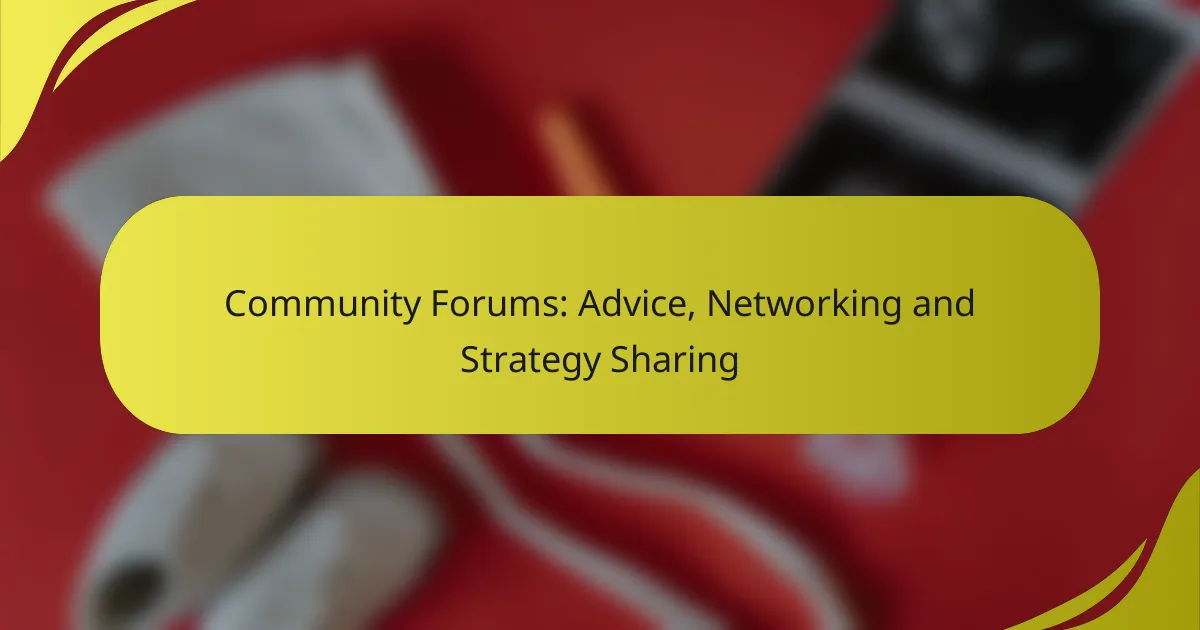Understanding social media insights is crucial for navigating the ever-evolving landscape of online engagement. By analyzing user behavior, content trends, and effective competition strategies, brands can enhance their marketing efforts and foster deeper connections with their audience. Implementing targeted approaches to boost engagement and conducting well-planned competitions can significantly elevate a brand’s presence on social media platforms.

How to analyze social media trends in the US?
To analyze social media trends in the US, focus on identifying patterns in user behavior, content engagement, and emerging topics. Utilize various tools and strategies to gather insights that can inform your marketing and engagement strategies.
Use social listening tools
Social listening tools help track conversations and sentiments around your brand or industry. These platforms can analyze mentions, comments, and trends across multiple social media channels, providing valuable insights into audience preferences and pain points.
Popular tools include Hootsuite, Brandwatch, and Sprout Social. When selecting a tool, consider factors like ease of use, data coverage, and pricing, which can range from free basic versions to premium subscriptions costing hundreds of dollars per month.
Monitor hashtag performance
Monitoring hashtag performance allows you to gauge the reach and engagement of specific campaigns or topics. By analyzing how often hashtags are used and the context in which they appear, you can determine their effectiveness and relevance.
Utilize tools like Hashtagify or RiteTag to track hashtag metrics. Look for trends in engagement rates and audience interactions, aiming for hashtags that generate high engagement relative to their usage frequency.
Track competitor activity
Tracking competitor activity provides insights into their strategies and audience engagement. By observing their content, posting frequency, and audience interactions, you can identify successful tactics and potential gaps in your own approach.
Use tools like SimilarWeb or SEMrush to analyze competitor performance metrics. Focus on their most engaging posts and campaigns, and consider how you can adapt their successful elements to fit your brand’s voice and objectives.
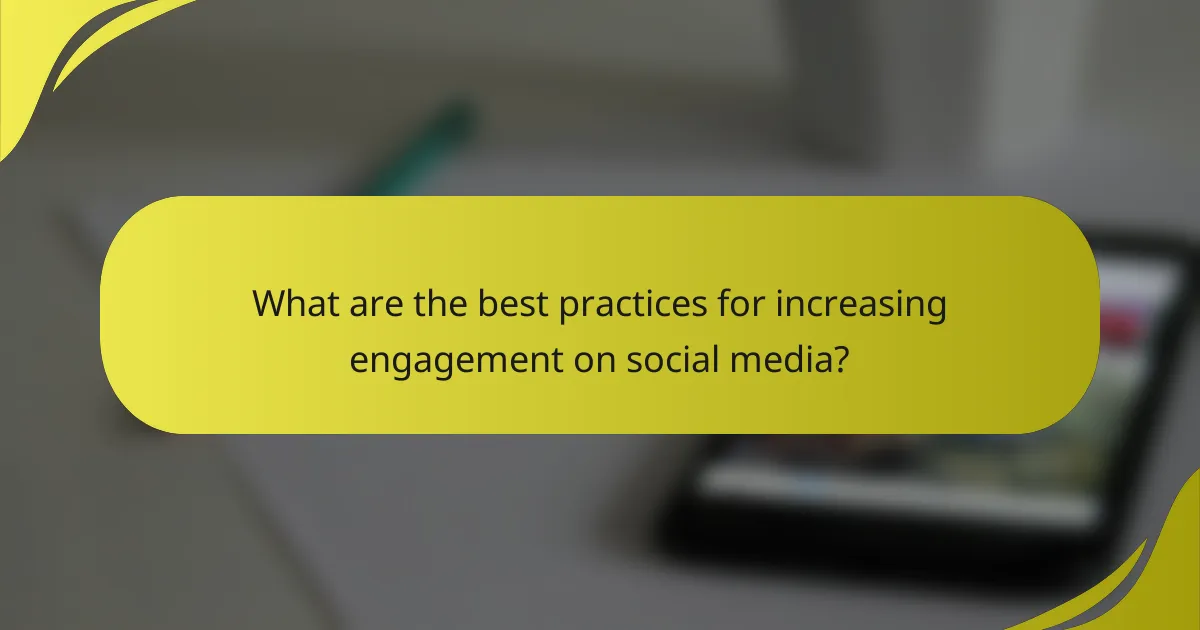
What are the best practices for increasing engagement on social media?
To boost engagement on social media, focus on creating content that resonates with your audience and encourages interaction. Key strategies include using interactive elements, leveraging user-generated content, and timing your posts effectively.
Create interactive content
Interactive content, such as polls, quizzes, and contests, can significantly enhance user engagement. These formats invite users to participate actively rather than passively consuming information, leading to higher interaction rates.
Consider incorporating tools like Instagram Stories polls or Facebook Live Q&A sessions. These features not only engage users but also provide valuable insights into their preferences and opinions.
Utilize user-generated content
User-generated content (UGC) fosters community and trust, as it showcases real experiences from your audience. Encourage followers to share their content related to your brand, which can be reposted to highlight customer loyalty and satisfaction.
For instance, running a hashtag campaign can motivate users to share their photos or stories, creating a sense of belonging. This approach not only boosts engagement but also enriches your content library with authentic material.
Post at optimal times
Timing your posts can greatly influence engagement levels. Analyze your audience’s activity patterns to determine when they are most active on social media, and schedule your posts accordingly.
Generally, weekdays during lunch hours or early evenings tend to see higher engagement rates. Tools like social media analytics can help identify these peak times, ensuring your content reaches the maximum number of users.
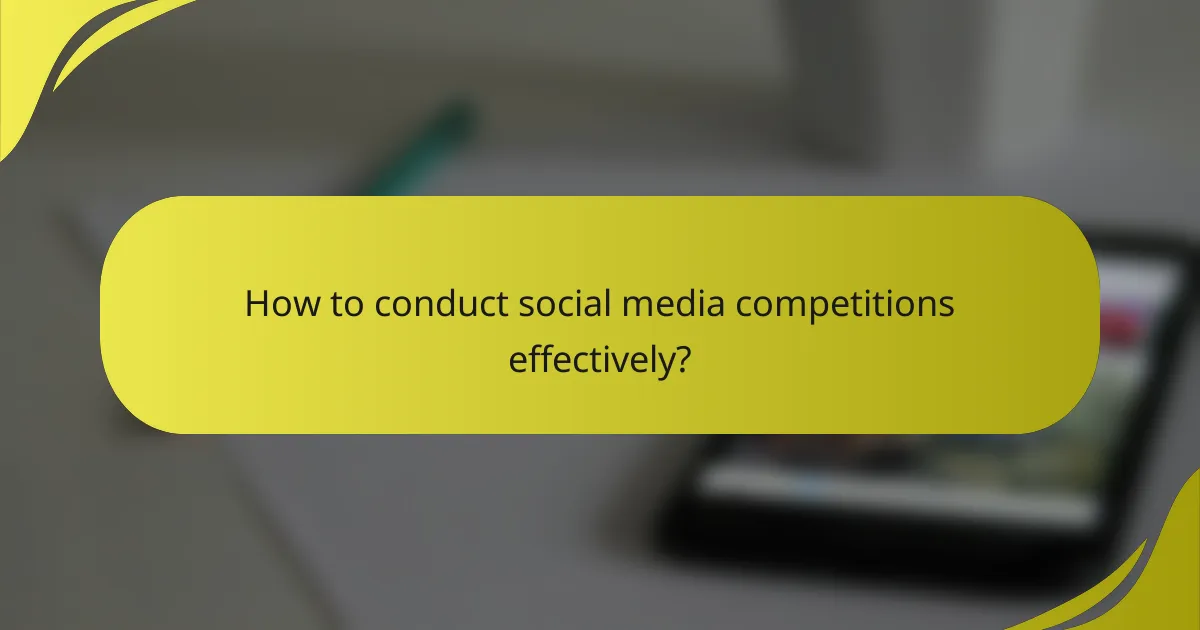
How to conduct social media competitions effectively?
To conduct social media competitions effectively, start by establishing clear goals and a well-defined strategy. This ensures that your competition not only engages your audience but also aligns with your overall marketing objectives.
Define clear objectives
Setting clear objectives is crucial for any social media competition. Determine what you want to achieve, whether it’s increasing brand awareness, growing your follower base, or boosting sales. Specific goals help you measure success and guide your competition’s design.
For example, if your goal is to increase engagement, you might aim for a certain number of likes or shares. If you want to grow your email list, consider requiring participants to sign up for newsletters as part of the entry process.
Choose appropriate platforms
Selecting the right platforms for your competition is essential to reach your target audience effectively. Different social media channels cater to different demographics, so choose platforms where your audience is most active. For instance, Instagram is popular for visual content, while Facebook is better for community engagement.
Consider the nature of your competition when choosing platforms. If it involves sharing photos, Instagram or TikTok may be ideal. For text-based entries, Twitter or Facebook might be more suitable. Always tailor your approach to the strengths of each platform.
Engage with participants
Engaging with participants during the competition fosters a sense of community and encourages more entries. Respond to comments, share user-generated content, and create interactive posts to keep the excitement alive. This interaction can significantly enhance the overall experience for participants.
Additionally, consider offering incentives for sharing the competition with friends, such as extra entries or exclusive content. This not only boosts participation but also expands your reach organically.
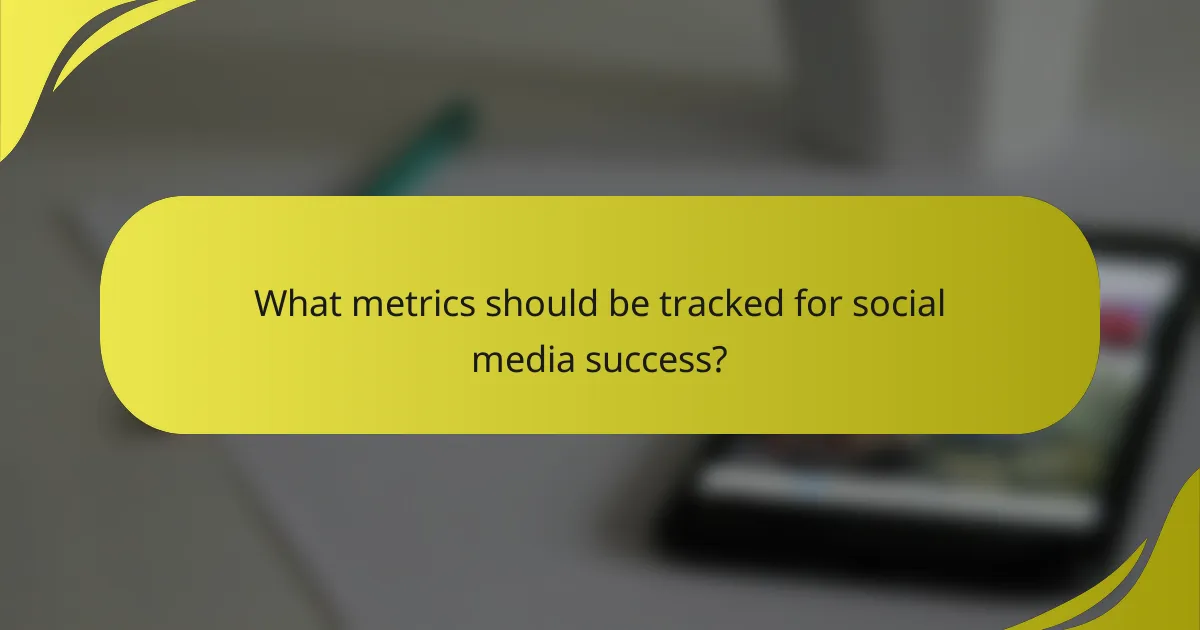
What metrics should be tracked for social media success?
To measure social media success, track key metrics such as engagement rate, reach, impressions, and conversion rate. These metrics provide insights into how well your content resonates with your audience and drives desired actions.
Engagement rate
Engagement rate reflects how actively your audience interacts with your content. It is calculated by dividing the total engagement (likes, shares, comments) by the total followers or reach, often expressed as a percentage. A higher engagement rate indicates a more connected audience.
Consider industry benchmarks when evaluating engagement rates, as they can vary widely. For example, a good engagement rate for brands on Instagram typically ranges from 1% to 3%, while on Facebook, it may be lower, around 0.5% to 1%.
Reach and impressions
Reach measures the total number of unique users who see your content, while impressions count how many times your content is displayed, regardless of whether it was clicked. Both metrics are crucial for understanding the visibility of your posts.
To improve reach, consider using targeted ads or collaborating with influencers. Regularly analyze these metrics to identify which types of content generate the most visibility and adjust your strategy accordingly.
Conversion rate
Conversion rate indicates the percentage of users who take a desired action after engaging with your content, such as making a purchase or signing up for a newsletter. This metric is vital for assessing the effectiveness of your social media campaigns in driving business goals.
To calculate conversion rate, divide the number of conversions by the total number of visitors from social media, then multiply by 100. Aim for a conversion rate of around 2% to 5% for most industries, but adjust your expectations based on your specific market and goals.
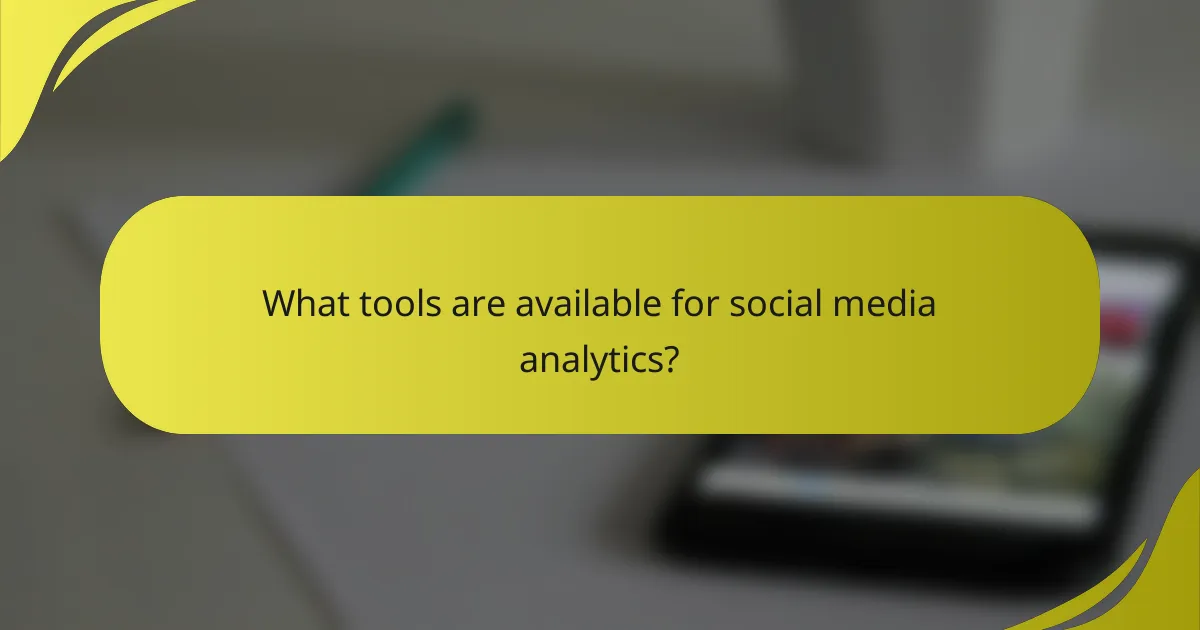
What tools are available for social media analytics?
Various tools exist for social media analytics, each offering unique features to track engagement, audience insights, and performance metrics. Choosing the right tool depends on your specific needs, budget, and the platforms you use.
Hootsuite Insights
Hootsuite Insights provides comprehensive analytics across multiple social media platforms. It allows users to track engagement metrics, audience demographics, and brand sentiment in real-time.
One of its key features is the ability to monitor conversations about your brand, helping you understand public perception. Hootsuite also offers customizable reports, making it easier to share insights with your team.
Sprout Social
Sprout Social focuses on engagement and reporting, offering tools to analyze social media performance and audience interactions. Its user-friendly dashboard provides a clear overview of key metrics like post engagement and follower growth.
This tool also includes features for scheduling posts and managing customer interactions, making it a comprehensive solution for social media management. Consider its robust reporting capabilities to track the effectiveness of your campaigns over time.
Google Analytics
Google Analytics can be leveraged for social media insights by tracking traffic from social platforms to your website. It provides data on user behavior, conversion rates, and referral sources, helping you understand how social media impacts your overall web performance.
To utilize Google Analytics effectively, set up UTM parameters for your social media links. This will allow you to measure the effectiveness of specific campaigns and posts in driving traffic and conversions.
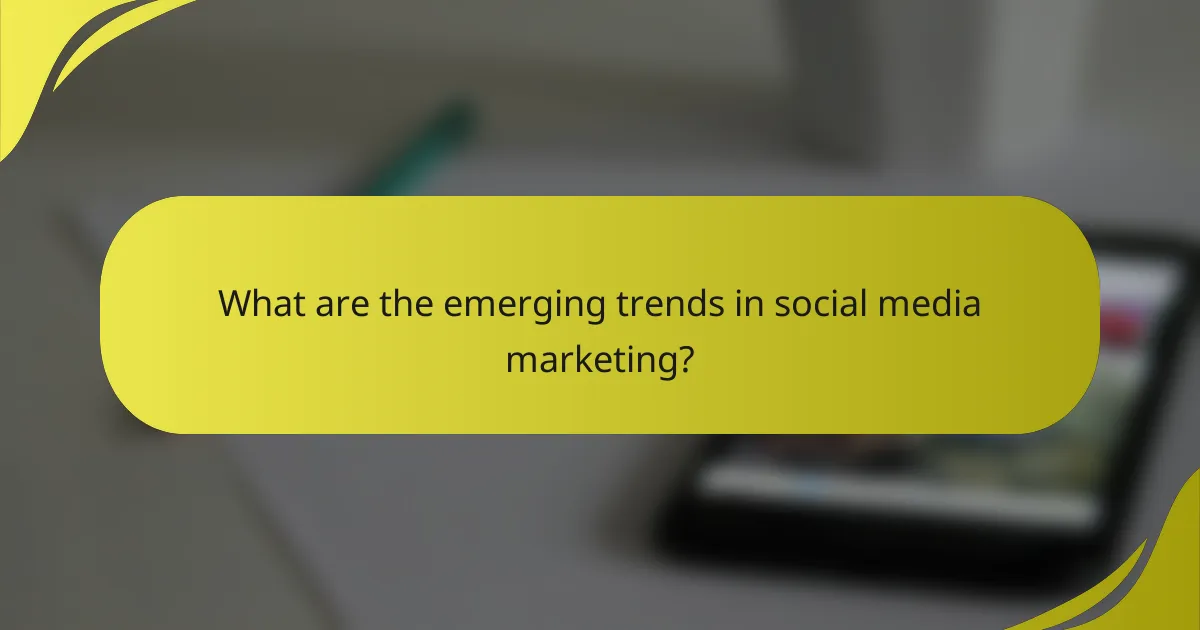
What are the emerging trends in social media marketing?
Emerging trends in social media marketing focus on innovative content formats and interactive user experiences. Marketers are increasingly leveraging short-form videos and augmented reality to enhance engagement and capture audience attention.
Short-form video content
Short-form video content, typically lasting from a few seconds to a couple of minutes, has gained immense popularity across platforms like TikTok, Instagram Reels, and YouTube Shorts. This format allows brands to deliver quick, impactful messages that resonate with users, especially younger demographics.
To effectively utilize short-form videos, brands should focus on storytelling and authenticity. Engaging visuals, catchy music, and clear calls to action can significantly boost viewer retention and interaction. Aim for a consistent posting schedule to maintain audience interest.
Augmented reality experiences
Augmented reality (AR) experiences are transforming how brands interact with consumers by blending digital content with the real world. Platforms like Snapchat and Instagram offer AR filters that allow users to engage with products in a fun and immersive way, enhancing brand recall.
When incorporating AR into marketing strategies, consider the user experience and ease of access. Simple, intuitive AR features can drive higher engagement rates. Brands should also monitor user feedback to refine their AR offerings and ensure they align with consumer preferences.



